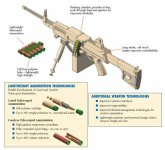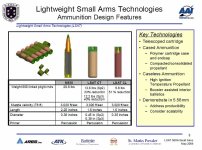The "shoot to wound" training concept was in fact SOP, .
I am 100% certain that SOP came from Corporate advertizing brochures, namely, that of Colt Industries.
The Military industrial complex has to sell weapons, regardless of whether they will work, and military doctrines are adjusted to justify the purchase.
The first time I released this was after watching a show on airpower and the Vietnam war, and there was this fighter pilot from the era. He mentioned all the years of training he had prior to being allowed in the cockpit, then the years in the cockpit, and off he goes to Vietnam. He picked up book of a WW2 fighter pilot’s experience in WW2 and there were all these descriptions of aerial maneuvers, barrel rolls, Immelmann turn, etc, all dogfighting maneuvers , and he had never heard of them. This fighter pilot had not been trained to dogfight. He had been trained to fly his plane straight and level, point the nose at the enemy, and launch his mighty missiles, which according to corporate brochures , would automatically seek out and destroy the enemy. According to doctrine there was no need to teach pilots how to dogfight as superior, hideously expensive, American technology eliminated all that man in the loop stuff.
According to the show, at the time the US was shooting down three MIG’s for every American plane shot down. I don’t know how many MIGS were Korean era MIG 17’s, but I will bet they accounted for the most, and three MIG 17’s were cheap in comparison to one American plane.
The US military took a step back to figure what to do. The Navy decided to establish the Top Gun school and Naval Pilots were taught to out think, out fight their opponents. The kill ratio of Navy fighters immediately shot up to 21 MIGS downed per American Plane.
The US Air Force decided to keep the prime contractors happy and spend money on technology. With even more hideously expensive American technology on board, the kill ratio for USAF fighter pilots was 1:1.
Yes, but, due to the cash flow, look at which agency got more lobbying power on the hill and guess whose retired Generals were rewarded with high paying jobs at major aerospace corporations.
Not the Navy!
The more I look at military doctrines the more they look like creations of the advertizing bureaus of Defense Industries.



